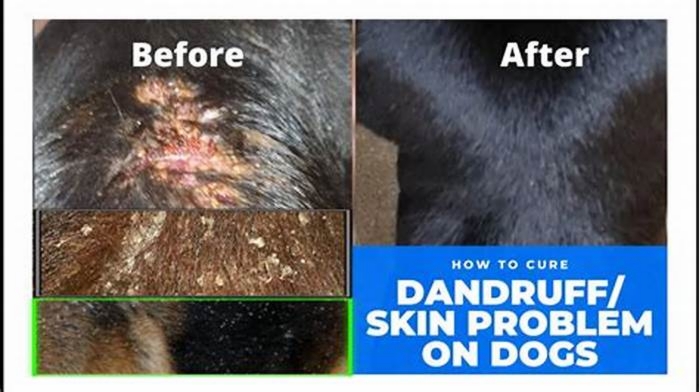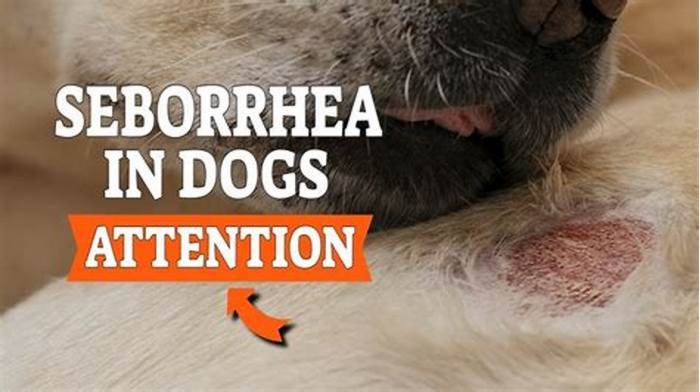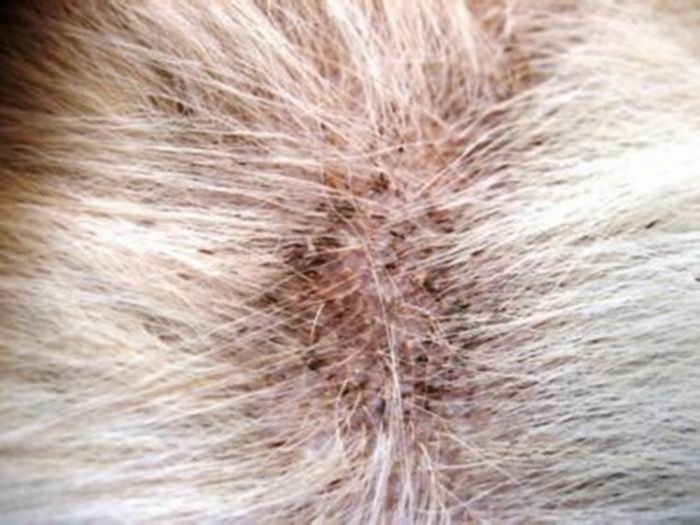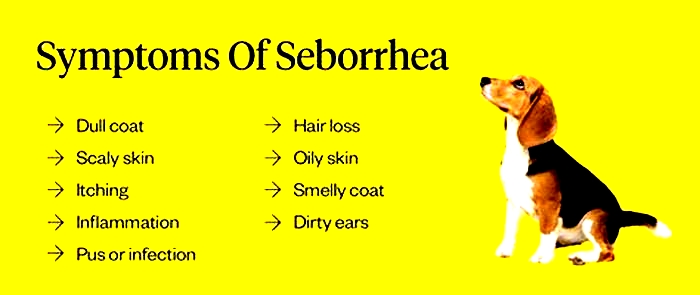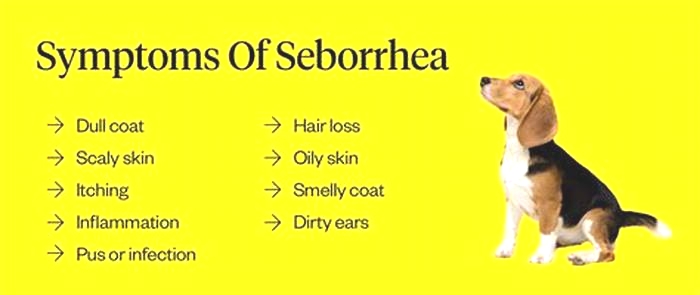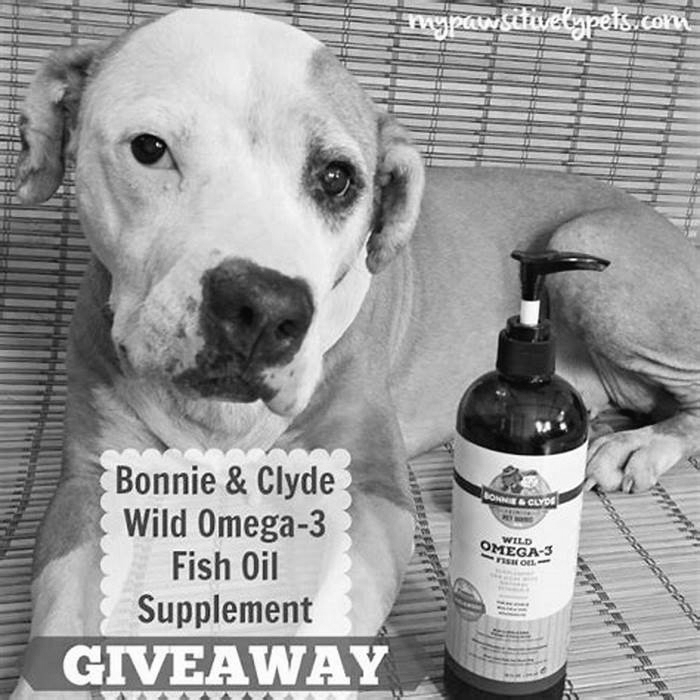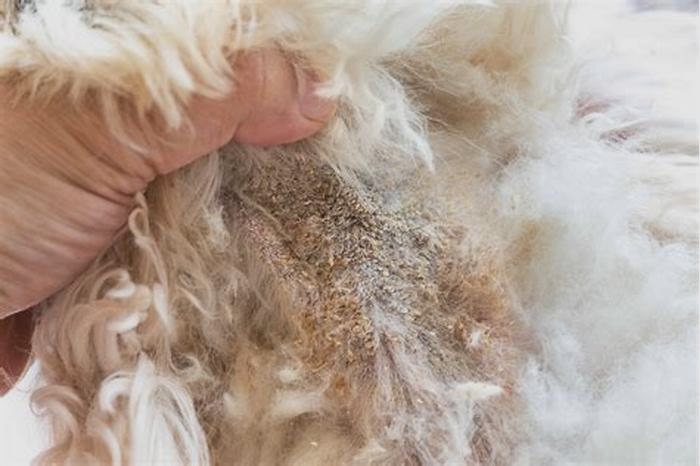What does seborrhea look like on dogs

Seborrhea In Dogs: Causes, Diagnosis, Treatment & More
Is your dog greasy, itchy, or smelly at the moment? If so, he might have a condition called seborrhea. Its always important to get your veterinarian to examine your dog as there are many things to consider when treating this condition. Lets explore these in more detail and what causes canine seborrhea in the first place.
What Is Seborrhea In Dogs?

Seborrhea, also known as seborrheic dermatitis, is a skin disease that commonly affects dogs. It is a condition that affects areas of skin that are rich in sebaceous (oil-producing) glands. These glands either go into overdrive, producing too much sebum, or their function becomes reduced, leading to dry and irritated skin.
People can also suffer from similar conditions, including seborrhea capitis, which is seborrhea of the scalp (causing dandruff and cradle cap in infants).
What Causes Seborrhea?
There are many different reasons why your dog might develop seborrhea. This condition can be either primary or secondary to something else thats going on.
Primary Cause Is Inherited
Seborrhea can be an inherited condition, with the exact cause undetermined (also known as idiopathic). It is quite rare, but some breeds are more prone to idiopathic seborrhea than others, including American Cocker Spaniels, English Springer Spaniels, German Shepherds, Golden Retrievers, West Highland White Terriers, Basset Hounds, and Shar-Peis. Most of these dogs have non-itchy skin.
Secondary Suggests An Additional Health Concern
Secondary seborrhea occurs due to underlying health conditions andmay or may not be itchy, depending on the cause.
The following conditions can make seborrhea more likely to occur as a secondary problem:
- Allergies
- Parasites such as mites and fleas
- Hormonal conditions such as hypothyroidism
- Fungal infections
- Obesity
- Dietary deficiencies
What Does Dog Seborrhea Look Like?

There are two types of seborrhea in dogs, seborrhea oleosa (oily seborrhea) and seborrhea sicca (dry seborrhea). Most dogs suffer from a combination of both types, so the symptoms can be a mixture of dry and greasy skin.
Here are some symptoms of canine seborrhea to be aware of:
- Large flakes of dry skin (dandruff), often found on your dogs face, back, and sides. It may also be seen on your dogs bedding.
- Red, inflamed skin which is excessively itchy.
- An unpleasant yeasty odor, caused by the grease from oily patches and any secondary infections (bacteria and yeast can worsen odors).
- Crusty thickened areas on the skin.
- Hair loss (alopecia).
How Is It Diagnosed?
Your veterinarian will start by examining your dog for classic signs of seborrhea. As well as checking your dogs skin, they will also examine the rest of your pet to check his overall health status.
Depending on their findings, they might suggest some additional tests, which could include:
- A blood test to check your dogs organ function and to check his thyroid hormone levels
- Samples from the skin to culture for any bacterial or yeast infections
- Skin scrapes to examine under the microscope for parasites
- Biopsy of the skin to look for deeper infections, cancer, and other diseases
If all of the possible secondary conditions are ruled out, then a diagnosis of primary (idiopathic) seborrhea is made. Animals with genetically related primary seborrhea may develop this condition at a young age.
How To Treat Seborrhea In Dogs
Seborrheic dermatitis treatment revolves around treating the symptoms and curing the underlying cause (in the case of secondary seborrhea).
Shampoo

The most common treatment used in the management of seborrhea is medicated antiseborrheic shampoos. These seborrhea dog shampoos help to gently lift the scurf on your dogs skin and reduce the risk of additional flakes and crusts forming. They cleanse your dogs fur and also help to reduce secondary infections.
According to the Merck Veterinary Manual, Shampoo therapy can decrease the number of bacteria and yeast on the skin surface, the amount of scale and sebum present, and the level of pruritus; it also helps normalize the epidermal turnover rate.
Ingredients commonly found in these shampoos include coal tar, salicylic acid, benzoyl peroxide, and fatty acids. The exact shampoo prescribed may depend on the degree of seborrhea your pet has. You may use other products in conjunction with shampoos, such as sprays and moisturizers (emollients), to help prevent your dogs skin from drying out. Your veterinarian will advise you on how frequently to use both shampoos and moisturizing products.
Other Options
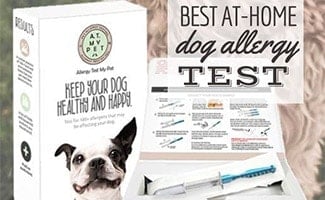
Other medications that you can use in the treatment of seborrhea include measures to treat the underlying cause of the disease:
- Anti-parasitic products to treat ectoparasites like fleas and mange mites.
- Treatment for hormonal conditions like hypothyroidism will consist of oral medications and monitoring with regular blood tests.
- Treatment of underlying skin allergies. You can manage allergies in a multitude of ways, depending on what the underlying trigger is. Some dogs will require strict hypoallergenic diets. Others may require immunosuppressive drugs like ciclosporins or glucocorticoids. Your veterinarian will discuss the various options available for your pet. To get a clear picture of your dogs allergies, you might want to take an at-home dog allergy test.
- Antibiotic and antifungal medications to treat any secondary infections.In cases of primary idiopathic seborrhea, one study has suggested that oral retinoid therapy may be helpful in its treatment.
- Vitamin A supplementation is also used in some cases.
Are There Any Home Remedies?
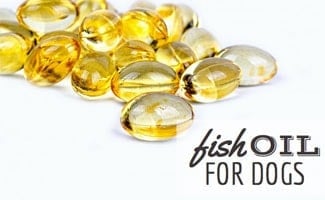
You should always follow advice from your veterinarian about the treatment of your pets condition. Discuss any canine seborrhea treatment home remedies with your veterinarian these must not take the place of any prescribed medications. However, the following natural therapies may be helpful in the management of seborrhea.
- Omega-3 fatty acid supplements help to act as natural anti-inflammatories and help support healthy skin and coat conditions.
- Other dietary supplements may be useful to supplement vitamins such as A, C, and E to help with general immunity, health, and skin conditions.
- You can apply coconut oil to itchy areas to help soothe and moisturize. Choose an unrefined oil, known as virgin coconut oil.
- Regular bathing with soothing oatmeal-based shampoo may help irritated skin.
Never use human shampoos or products on your pet unless with express agreement from your veterinarian.
What Is The Prognosis For Canine Seborrhea?
Some cases of canine seborrhea can be cured with appropriate treatment if you seek help promptly. Treating the underlying cause of seborrhea can lead to a full resolution in many cases.
However, if your dog suffers from the less common primary idiopathic seborrhea, he may require long-term management strategies for his skin. Symptoms can usually be kept under control in these cases if you follow your veterinarians recommendations.
Can I Prevent It?
You cant prevent genetically inherited idiopathic seborrhea. However, not breeding from animals that suffer from seborrhea and buying from good breeders that wouldnt reproduce from affected animals, can reduce the risk of seborrhea in your dog. If youre buying a puppy from a breed prone to seborrhea, make sure to meet both of the parents and give them a once-over to reduce the risk of purchasing a puppy with problems.
You can lessen the risk of other dogs getting seborrhea by using parasite preventatives, feeding a good quality commercial diet made to AAFCO standards, maintaining a healthy body weight, and managing any underlying allergies as recommended by your veterinarian.
Does Your Dog Have Other Skin Problems?
Is your dogs skin frequently itchy or rashy? Dogs suffer from a host of skin problems in addition to seborrhea.If this sounds like your pup, he could be suffering fromskin allergiesfrom something in his food or environment.Skin infections are also common in dogs, so you may want to know the signs of infection before it leads to seborrhea.
You must take your dog to your veterinarian if you suspect he has seborrhea, an infection, or allergies to receive a proper diagnosis and have appropriate treatment, which depends on the cause of their condition.
Tagged With: SkinSeborrhea in Dogs
A diagnosis of primary seborrhea is reserved for dogs in which all possible underlying causes of seborrhea have been excluded. Most dogs with seborrhea have the secondary form of the disease. The most common underlying causes are hormonal disorders and allergies. The goal isto identify and treat these underlying causes. Allergies are more likely to be the underlying cause if the age of onset is less than 5 years. Hormonal disorders are more likely if the seborrhea begins in middle aged or older dogs. A lack of itching helps to exclude allergies, scabies, and other itching diseases. If itching is minimal, your veterinarian will seek to exclude hormonal disorders, other internal diseases, or other primary skin diseases. If itching is significant, allergies, scabies, and fleas will also be considered by your veterinarian.
Other important considerations in making a diagnosis include the presence of excessive urination, excessive drinking, heat-seeking behavior, abnormal estrous cycles, skin infections, the season, diet, response to previous medications, fungi or bacteria present, and the environment.
Your veterinarian will give your pet a thorough physical examination, including internal organ systems and a comprehensive skin examination. This is the first step in identifying the underlying cause. The skin examination documents the type and distribution of the abnormalities; the presence of hair loss; and the degree ofodor, scale, oiliness, and texture of the skin and hair coat. The presence offollicular boils, papules (pimples), crusts, and other bumps usually indicates the existence of a superficial pyoderma (bacterial infection). Darkening indicates a chronic skin irritation (such as infection or inflammation), and skin thickening indicates chronic itching. Yeast infection will always be considered during this process.
Secondary infection is a problem for dogs with seborrhea. The keratinization abnormalities in seborrheic dogs usually provide ideal conditions for bacterial and yeast infections. The self-trauma that occurs in itchy animals increases the likelihood of a secondary infection. The infections add to the itchiness and are usually responsible for a significant amount of the inflammation, papules, crusts, hair loss, and scales. Samples of the affected areas are taken to identify the quantity and type of bacteria or yeast present. In a seborrheic dog with itching, the infection may cause all or most of the signs. Other diseases may be uncovered by clearing the infections. Thus, you should be sure to comply with any follow up examination requests made by your veterinarian.
Additional tests may also be necessary, including skin scraping, fungal and bacterial cultures, flea combing, skin biopsy, and blood and urine tests.
Seborrhea In Dogs: Causes, Diagnosis, Treatment
Examples of specific conditions/diseases
Primary keratinization disorders, which are also referred to as primary canine seborrhea, are rare. Primary canine seborrhea is essentially a diagnosis of exclusion, meaning we only diagnose primary keratinization disorders after ruling out common causes of secondary seborrhea. Unfortunately, primary keratinization disorders are often hereditary. Thus, to avoid passing this disease onto more dogs, dogs with primary canine seborrhea should not be bred.
Examples of primary keratinization disorders in dogs:
- Vitamin A-responsive dermatosis
- Ichthyosis
- Schnauzer comedo syndrome
- Ear margin dermatosis
How Seborrhea in Dogs Is Diagnosed
As we have discussed, seborrhea is a description rather than a diagnosis of a specific disease. When we say that a dog has seborrhea, we usually mean he has excessively flaky skin. After establishing that a dog has seborrheic symptoms, your veterinarian will need to diagnose the underlying cause.
The first step in diagnosing the cause of a dogs seborrhea is to consider its signalment, meaning its breed, sex, and age. As a veterinarian, a dogs signalment helps guide my initial diagnostic process because different diseases are more common in certain breeds and age groups. Additionally, some conditions may be more common in males or females.
For example, dogs with primary keratinization disorders tend to start displaying symptoms at a younger age since many of these conditions are inherited. Additionally, certain breeds such as American cocker spaniels and West Highland white terriers may be more predisposed to primary seborrhea.
As a clinician, an extremely valuable part of diagnosis is taking a thorough history. Gathering a history costs no money but still provides crucial clues about what may be affecting a patient.
Your vet will ask you about your dogs symptoms. An important symptom your veterinarian will ask about is itching. This is because the presence of itching is often associated with external parasites like fleas. Other symptoms like changes in water intake, appetite, and urination are also important to note since these may increase the suspicion of endocrine disease.
Your veterinarian will also likely ask you about the onset and progression of your dogs symptoms as well as whether they are seasonal. Information about your dogs diet and environment also provides important context, especially in suspected cases of allergy. Another important piece to consider is whether a dog has already been previously treated for his symptoms and if so, whether or not he responded positively to that therapy.
After collecting a history, your vet will perform a physical exam of your dog. In addition to evaluating all of your dogs organ systems, your veterinarian will carefully assess your dogs skin and ears. She will note any lesions as well as their location since the distribution of skin lesions gives us hints about possible underlying conditions. Examination of the skin gives your vet the opportunity to look for things like fleas and broken hairs, which may indicate itching.
Using the information from your dogs history and physical exam findings, your veterinarian will prioritize which diagnostic tests are indicated. She will recommend certain tests based on the most likely possible disease processes she suspects. In cases of dog seborrhea, your vet will likely recommend skin cytology to check for secondary infections. Other tests your veterinarian may recommend include a skin scraping to look for mites, fungal and bacterial skin cultures, bloodwork and urine tests to assess for systemic disease, and a skin biopsy if there is a concern for immune-mediated disease or cancer.
On rare occasions, all of these tests may be normal. In these cases, when all or most of the possible causes of secondary seborrhea are excluded, your veterinarian may diagnose your dog with primary seborrhea. A diagnosis of primary seborrhea essentially means that no other disease process could be identified which could be causing your dogs skin abnormalities. And as such, it is suspected that your dogs skin changes are due to the skin renewal process itself.
Treatment for Seborrhea in Dogs
Any secondary infections that are identified should be treated with topical and/or oral therapies as appropriate. It is important to treat any secondary infections since these infections can cause significant itching and discomfort.
If an underlying cause of seborrhea is identified, it should be treated accordingly. For example, a dog diagnosed with hypothyroidism may require thyroid hormone supplementation while a dog with vitamin A-responsive dermatosis should be treated with vitamin A.
Regardless of the underlying cause, all dogs with seborrhea should be bathed regularly with medicated, anti-seborrheic shampoo. Anti-seborrheic shampoos serve a few different functions in dog seborrhea treatment. They are keratolytic, meaning they encourage the top layer of dead skin to shed. Anti-seborrheic shampoos are also keratoplastic, which means they help correct the rate of skin turnover so that flaky, dead skin is not produced as quickly.
These medicated shampoos sometimes have additional benefits depending on what ingredients they contain. For example, they may have ingredients aimed at reducing bacteria or yeast. These shampoos may also have hydrating ingredients, which may be useful for dogs with seborrhea sicca. Alternatively, there are anti-seborrheic shampoos designed for seborrhea oleosa, which instead contain ingredients that degrease the skin and coat.
When I prescribe medicated shampoos to pet owners, the most important aspect I emphasize is contact time. Many of the active ingredients in these medicated shampoos are only effective if they are in contact with the skin for a certain amount of time. I recommend waiting at least 10 minutes before rinsing off the shampoo. I understand that 10 minutes may seem like a long time. Thus, I recommend using treats or a lick mat with peanut butter to distract your dog until the 10 minutes are up.
So how frequently do you need to bathe a seborrheic dog? It really depends on the severity of that individual dogs seborrhea and whether there are other issues such as secondary skin infections. Therefore, please defer to your veterinarian regarding how frequently to bathe your dog.
In general, you will need to bathe a dog with seborrhea more frequently than a dog with normal skin. But once the symptoms are well-managed, the frequency of baths can be reduced. However, I always prepare owners that if their dogs have any type of skin issue, including seborrhea, they will likely need to continue medicated baths fairly regularly as a long-term management strategy. This form of regular topical therapy acts as maintenance therapy to prevent their dogs seborrhea from flaring up again and leading to secondary skin infections.
In addition to topical therapy in the form of regular medicated baths, there are also a few systemic treatment options for canine seborrhea. For dogs with seborrhea sicca, essential fatty acid supplements may improve the dryness associated with their skin and hair coat. Although these supplements are available over the counter, you should always consult your veterinarian before administering any new supplements to your dog. I also always caution owners to introduce fatty acid supplements gradually because they can cause diarrhea.
There are a few other systemic treatment options available but they are only appropriate in certain situations. Therefore, if you are curious about other available treatment options, such as retinoids, I recommend asking your veterinarian if these are safe or relevant options for your canine companion.
Recovery of Skin Disease (Canine Seborrhea) in Dogs
When the underlying cause of a dogs seborrhea can be identified, the prognosis is usually quite good. Many causes of secondary canine seborrhea can be treated and even cured completely. As long as the underlying disease can be well-managed, we can often significantly decrease or even eliminate a dogs seborrheic symptoms.
Unfortunately, primary keratinization disorders are usually much more difficult to control. While many causes of secondary seborrhea can be treated, primary keratinization disorders are not typically cured. Instead, primary keratinization disorders require long-term management which can be frustrating and expensive. Thankfully, these forms of primary seborrhea are not very common.

